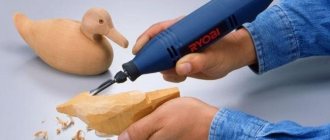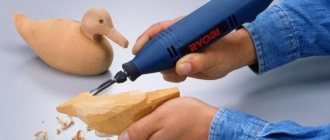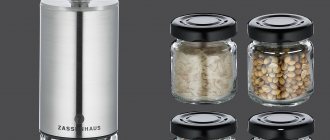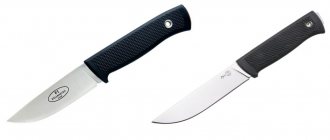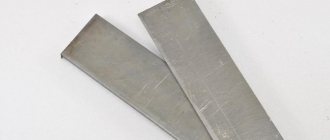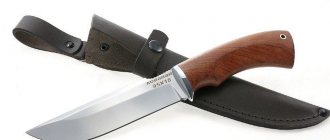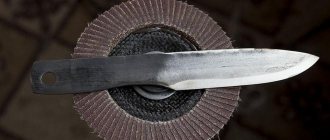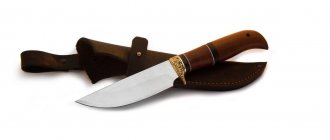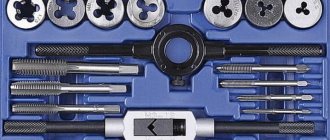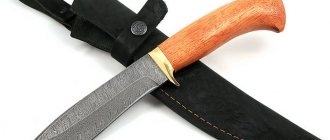A tile cutter is the most primitive and at the same time necessary tool for working with ceramic tiles and porcelain stoneware. With its help, you can make a cutting line efficiently, easily and relatively quickly. What are the criteria for choosing a tile cutter? – let's look at this issue in more detail.
Functionality and principle of operation of the tile cutter
A tile cutter is a device that allows you to carry out a number of operations:
- Cut the tiles in a straight line;
- Perform a curly bend;
- Trim the facing material;
- Divide the ceramic plate into fragments.
Also, profile tools can be used for cutting clinker, porcelain stoneware, stone and glass.
The principle of operation of the device is the impact of a diamond-coated roller on the surface of the product, fixed using a clamping or rail mechanism on a platform (bed).
Budget models
By contacting the network of mass construction stores Obi or Leroy, you can purchase a fairly inexpensive tool that is quite suitable for one-time work (within 400-500 rubles).
Types of budget models:
- Roller. The cheapest tools that do a great job on wall tiles. They are easy to manufacture and use.
- Mechanical. They have a rigid carriage, which provides greater cutting accuracy (compared to a roller). Mechanical models have proven themselves well in working with porcelain stoneware.
Of course, you need to buy a tool that can handle both tiles and porcelain tiles for the floor.
Types of tile cutters
Modern industry offers various types of tile cutters. To obtain a high-quality result, it is necessary to select a device taking into account the technical qualities of the material, the volume and level of complexity of the work.
There are main types of tile cutters:
- Manual mechanical;
- Manual electric;
- Stationary electric.
Conclusion
For minor repairs in a house or apartment, a manual mechanical tile cutter is sufficient. If you need to install a switch or socket in the cladding areas, then take a model with the function of milling holes.
If you plan to lay a large number of large floor tiles, then it is better to take a stationary machine with a bottom disk feed. And for paving stones and porcelain stoneware, it’s worth buying a powerful unit with a top disc feed.
Home repair tool:
- Doing repairs while at home: the best cordless screwdrivers 2020
- We cut at any angle: rating of miter saws with broaching 2020
Manual tile cutters
Manual mechanical tools allow processing without reference to a source of electrical energy. Despite its simplified design, the tool provides the ability to perform operations such as:
- Adjustment of masonry elements in size and shape;
- Cutting holes;
- Creating recesses;
- Cutting at an angle of 450 on the surface of the tile.
Manual tile cutters have low productivity, but the mechanical device has a number of advantages. The most significant are:
- Compact and light weight;
- Safety in operation;
- Ability to adjust the pressure on the work surface;
- Independence from the presence of an electrical network.
Maximum disc diameter
The larger the diameter of the blade, the thicker the material that can be cut. In professional equipment, discs have a diameter of about 300 mm, and they can cut concrete with a thickness of 40...110 mm. If the disk has a diameter of about 100 mm, then it will be able to cut tiles up to 30 mm thick.
Electric tile cutters
Using an electric tool with a cutting element in the form of a diamond disc can significantly speed up the processing of ceramic tiles. High speed is essential for professionals who value high productivity.
Tile cutters powered by electricity or a battery are classified depending on their size, degree of mobility and engine location.
How to cut tiles with a tile cutter?
Cutting tiles is a serious and labor-intensive process. Therefore, there are certain nuances when working with the tool:
- When cutting, the tiles are moved only towards the disc.
- The force of pressure depends on the structure of the material; the stronger it is, the more pressure is produced during cutting. At the same time, they press on the product from all sides. This helps to avoid the formation of chips and distortions.
- The tile must be fixed on the table.
- The water from the tank is changed constantly.
ATTENTION! When working with the tool, wear special glasses and noise protection headphones.
How to cut at an angle with a tile cutter?
The main advantage of an electric tool is the ability to make a special cut at an angle.
This happens due to the tilting of the cutting wheel. At the same time, a large number of tiles can be cut in a short period of time, and due to the water supply function, very little dust is released, which is a significant advantage when working with such a tool.
By changing the position of the cutting head, which is fixed with special screws, the angle on electric tile cutters changes. Depending on the required cutting angle, the tool is divided into several types:
- Cut at right angles (90°).
- Processed at two fixed angles (90 and 45°).
- They operate in the range from 45 to 90°.
The procedure for using such tile cutters is as follows:
- Apply masking tape to the part of the tile where the cut will be made.
- Make the necessary markings using a ruler and pencil.
- Place the tile on the device platform at the desired angle.
- Carefully, without pressing too hard, cut off the excess, and then you can grind the corner.
It is necessary to cut only the back side so as not to touch the enamel on the front part. If you do get on the glossy layer, this area can be sanded with sandpaper.
Stationary electric tile cutters:
Stationary machines for cutting tiles are equipped with a hydrocooling system, which prevents overheating of the mechanisms, and, consequently, increases the processing speed and the ability to continuously perform a given operation for a long time.
The overall platform of the electric machine and the absence of a limiter on the frame allow you to cut tiles of larger sizes.
- Modern devices have replaceable attachments: diamond bits for drilling hard materials and a disk for cutting.
- The design provides the ability to connect a dust collector, which collects the smallest particles generated during the operation of the tool.
- Improved models allow cutting at an angle of 450.
Some modifications of slab cutting machines are equipped with a laser pointer for precision cutting lines. There are main types of tile cutting devices for use in stationary conditions:
With bottom motor
In a bottom-mounted machine, the part of the platform where the tiles are fixed is located above the water tank. Thanks to its design features, the unit does not take up much space in the room.
The disadvantage of this type of machine is that the cutting line along the surface is drawn manually. In the absence of proper experience, it is difficult to make a high-quality cut.
In addition, due to the massive hydrocooling system, the device does not allow deep cuts, which leads to difficulties when processing certain types of materials.
Top motor placement
An electric machine with an overhead motor is a tool for professionals. A fairly large, powerful device has a complex design and a higher cost.
Top drive devices are divided into:
- Bridges, in which the movable cutting element moves along guides;
- Console, equipped with a movable platform and a fixed console.
The design features of bridge machines allow you to adjust the cutting height and perform deep cuts, and therefore marble, granite and other hard materials can be processed using the machine. Console devices are similar in technical parameters to machines with a bottom-mounted engine.
What length of tiles can be cut?
The tile cutting length parameter is relevant only for those tools whose stroke is limited, that is, for manual tile cutters and for models with top disk feed. Which tile cutter should I choose based on this parameter? As with cutting depth, it is important to know what size tiles you plan to cut. For example, if you need to cut 600*600mm floor tiles, then you need a tile cutter with a maximum cutting length of at least 600mm.
For manual tile cutters, the average cutting length is 450 – 800 mm, although there are models that can cut tiles up to 1200 mm. From practice, we will say that for a home, a device with a cutting length of 600 mm, for example, RedVerg RD-TS600 , is enough for the eyes. If you need a larger tile size, it is better to use a top-feed disk.
Devices with a bottom disk feed can, in theory, cut tiles of any size, but it is worth considering the table area: the smaller it is, the more difficult it will be to guide the tiles (some of them will need to be kept suspended).
Choosing a tile cutter
When purchasing a device for cutting tiles, you should familiarize yourself with the performance characteristics of the product.
It is recommended to pay attention to the following indicators:
- Engine power. For cutting tiles, 750 - 1500 W is enough, for granite and marble - at least 2 kW.
- Cutting height. Typically, with modern devices, the cutting depth is adjustable and ranges from 40 to 110 mm.
- Rotation speed of at least two thousand revolutions per minute at idle.
An electrical device must be safe to use, therefore, from the instructions for using tile cutters, you should find out the degree of protection from electricity: the quality of insulation, the presence of an RCD (residual current device) and waterproof casings.
Currently, the industry offers a wide range of devices for cutting facing materials.
The most popular among mechanical tile cutters are:
- BISON EXPERT 33195-60 (Russia) is suitable for cutting long tiles. A cutting depth of 30 mm is considered a good indicator for a mechanical device.
- STAYER 33110-48 (Germany, China) allows you to make complex shaped cuts and round holes with a diameter of 30 – 80 mm. This model is the optimal ratio of price and quality.
When choosing electric manual tile cutters, experts advise paying attention to the following models:
- STANLEY STSP125-B9 (USA) is a compact device with a very powerful engine.
- The Russian device ZUBR EP-200-1000N is designed for straight, oblique, combined cutting of all types of tiles. The design includes a work table with the possibility of extension.
Among electric stationary machines, professionals distinguish:
- STURM TC-9811 (China) is a small-sized device with high cutting accuracy and an excellent cooling system.
- DeWALT D24000 (USA) – powerful electric cutter with high spindle speed. The stainless steel machine is equipped with side and rear collectors for efficient use of water resources. The saw mechanism allows you to change the angle of inclination for curly processing.
The German-Chinese tile cutter FUBAG Masterline 6 Star – 660 is capable of making straight cuts with a depth of 40 mm and oblique cuts to process both tiles, granite and marble. A long service life is guaranteed with proper care of the machine.
TOP 7 popular models
When choosing a tool for work, you can be guided by ratings. They are compiled based on the opinions of specialists working with them.
Bison 33193-80
The model is simple in design and easy to use. Her weight is 10.4 kg. This provides the structure with the stability necessary for operation. The main purpose of the Bison is domestic use. The model is designed for cutting porcelain tiles and ceramic tiles. Working thickness range from 0.5 to 1.6 cm.
Advantages:
- Reinforced design.
- Small dimensions.
- Low price.
Flaws:
- No desktop.
- Cannot cut stone.
The model has a 3-year warranty. The average cost is 5.6 thousand rubles. Country of origin: Russia.
Dmitry B. review:
A reliable machine for its price. The set includes a bag. The disadvantage is rapid wear of the cutting roller.
Encore 3660
Cheap compact machine. Model weight 2 kg. Encor 3660 is designed for cutting ceramic tiles. Equipped with a high-quality cutting roller. It has a reliable base and a flat working surface. The rubber coated handle ensures safety during operation.
Advantages:
- The machine ensures threading of the material without chipping.
- Low price.
- Light weight.
Flaws:
- When working with a tile cutter, physical effort is required.
- Small cutting depth up to 6 mm.
Average cost 880 rub. Country of origin: China.
Nikita G. review:
The machine requires caution when operating. May break the tile rather than cut it.
Montolit Masterpiuma 63P3
The machine can be used in everyday life and professional activities. Designed for cutting porcelain stoneware and ceramic tiles. The model is equipped with a floating handle. This greatly simplifies the work process. The tile cutter produces an even cut. The design includes additional devices: ruler, protractor, etc.
Advantages:
- Small mass.
- Spare rollers included.
- Has the ability to cut diagonally.
The disadvantages include the difficulty of adjusting the cutting.
The average cost is 22 thousand rubles.
Oleg M. review:
I have been working with this model of tile cutter for 3 years. Rating 5. Country of origin: Italy.
Rubi Star-61
Multifunctional machine. Designed for cutting all types of tiles, including tiles and mosaics. The model has a reinforced base and an additional bed for laying material. It can accommodate cutters of different diameters. This allows. Maneuver when cutting with the size of the tile.
Advantages:
- Smooth cut.
- Shock-absorbing base.
- Stable design.
The average cost is 6.6 thousand rubles. Country of origin: China.
Vladislav M. review:
Reliable machine. Gives a quality cut. The set includes a bag.
Bars 87590
Monorail machine. Designed for cutting ceramic tiles. The carriage is located on 2 bearings. A ruler is provided to set dimensions. The material of manufacture is aluminum. The handle is reinforced. Weight 10.5 kg.
Advantages:
- Affordable price.
- Compactness.
- Possibility of cutting ceramic tiles and porcelain stoneware.
Disadvantage: small cutting depth.
The average cost is 4.4 thousand rubles. Country of origin: Russia.
Alexander U. review:
I am pleased with the performance of the tool. Simple and reliable to use.
SIGMA 2A3
Lightweight, compact, multifunctional tool. The machine has 2 cutting systems. Designed for professional use. Provides fast and high-quality cutting.
Advantages:
- Availability of a high precision ruler.
- Smooth ride.
- Suitable for working with thin ceramics.
The disadvantages include the high cost of the tool.
The average cost is 9 thousand rubles.
Mikhail Sh. review:
I use a tile cutter for tiles of various thicknesses. Gives a quality cut. Reliable at work.
MATRIX 600X16 mm with ballerina
The machine has a simple design and a durable frame. Reliable in operation. The design has a ballerina for cutting shaped holes in the tiles. Designed for professional work.
Advantages:
- Carbide roller.
- Compactness.
- Affordable price.
- Wide functionality.
Disadvantage: the ballerina does not cut through thick tiles.
The average cost is 2.5 thousand rubles.
Andrey K. review:
Lightweight, convenient tool. Cuts porcelain tiles well.
Photos of the best tile cutters
Quality criteria
What you should pay attention to when choosing a manual tile cutter:
- Bed rigidity. The base should be made of thick, high-quality metal and the side in the center should not sag when you press on the handle when breaking the tiles. For this reason, it is better to avoid purchasing manual tile cutters with cutouts in the frame for cutting circular holes; there are crowns and ballerinas for this.
- Ease of movement of the handle with the cutter. Opt for tile cutters with bearings; their running will not deteriorate over time, and you will not have to change the tool because of parts that have deteriorated due to friction. Models without bearings will need to be lubricated for normal operation, and if oil gets inside the seam at the cut site, it will be impossible to wash it off.
- Hard runners. Try to choose thick guides that do not wobble, otherwise the cut will turn out crooked.
- The roller play should be minimal. Otherwise, you will not be able to cut 2 tiles of the same size.
- Easy to replace cutting element. Is it possible to find a spare roller for sale? Do you have service centers in your region?
- Maximum cutting size. If you are going to cut tiles diagonally, you need to take larger models.
- Installation reliability. It is advisable to take a heavy and cast body; there should be rubber gaskets on the legs. But lightweight options are well suited for mobile work.
- Separating force. The higher it is, the easier it will be to break the tile.
- Cutting system. In Russia, manual tile cutters with push-pull cutting are more common; it allows you to cut thicker materials. In European countries, they often use the “self-service” system; it is more accurate and faster.
All cheap manual tile cutters suffer from a very weak design; the roller play can reach up to 4 mm. They can handle soft wall tiles, but will not take quality porcelain tiles and floor tiles. Choosing a manual tile cutter that costs less than 500 rubles is money thrown away.
